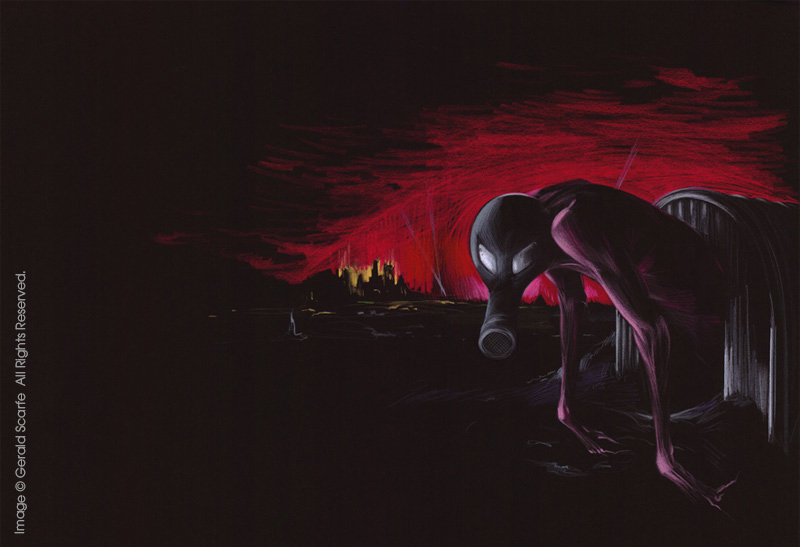Darkness implodes into light. * T’filla, d’veikus to Hashem, is a frequency that transcends conflict. * The ultimate peace of Moshiach, Prince of Peace.
By Rabbi Boruch Merkur

Kabul, capital of Afghanistan, implodes, raising the question of the effectiveness of mixing in to foreign affairs, spending billions of dollars and at the cost of human lives.
With regime change, there’s never a shortage of armchair politicians and military strategists.[1] On the other hand, the age-old debate of how to best attain peace is discussed in the Torah itself, advice that is directly relevant to peace in our lives.
*
Having been freed from slavery, the Jewish people journeyed to Mount Sinai to receive the Torah, the formula for peace on earth.[2] The obstacle in the way of freedom and peace was the Egyptian military in hot pursuit. The Jewish people voiced four different responses to the threat, four different steps to securing the ultimate peace.[3]
First, rather than face the adversary, “Let’s throw ourselves into the sea.” Being forced back into slavery is not an option. This group argues that the indignation of capture and (forced) transgression must be avoided at all costs, including, if necessary, self-sacrifice.[4] That way, nothing – no enemy or foreign agenda - can possibly impede our singular devotion to Hashem.
In reaction, the pendulum of dialectics swings the other way: “Let’s return to Egypt.” The command to serve G-d on Mount Sinai will have to wait. Seeing their predicament, this group reasons that it is G-d’s will for Jews to temporarily return to Egypt for further plunder, increasing the spoils from the land of their bondage.
A third position seeks to temper the two extremes - not to surrender our lives to avoid transgression, nor to risk assimilation by returning to Egypt to redirect its resources towards a holy purpose, but - “Let’s wage war with them.” There is no question that facing the enemy comes with extreme danger, but it enables the possibility of victory, freedom from their enemy through their complete annihilation.
The final approach, “Let’s cry out against them,” deals with the enemy, but not by engaging them - not by battling them outright in war, nor by returning to their land to transform it. “Crying out” means to climb above conflict, to a height, a frequency, where nothing opposes G-d’s will.
Moreover, the impact of bypassing conflict through t’filla is immediate. Unlike war, which requires intense effort but a relatively short span of time, and unlike returning to the land to transform it, which takes a long time, authentic prayer brings instant peace:
“Let’s cry out against them” – To counter the threat of the enemy, there is no need for war; all that is required is to daven to G-d. This approach automatically cancels the opposition.
In fact, the expression used here, “Let’s cry out against them,” “nitzvach k’negdan” - not “nispalel l’Hashem,” “let’s pray to G-d.” “Cry out” emphasizes that prayer is (not only d’veikus to Hashem, cleaving to G-d in prayer, tangibly experiencing a connection to the Divine, but) also the effect it has “k’negdan – against them” (to vanquish the threat of the Egyptians).[5]
The function of t’filla to bring peace in this way calls to mind the interpretations of “nitzvach k’negdan” as: 1) a strategy in warfare, whereby the soldiers “tzavchin b’kolan,” “cry out with their voices,” to frighten the enemy; or 2) to strike them down mystically with Divine names.*
But according to these interpretations, “nitzvach k’negdan” is an act of war (and therefore included in the third approach, “Let’s wage war with them,” and not the fourth), whereas according to what we’re saying here, “nitzvach k’negdan” is crying out to Hashem, t’filla, prayer, not an act of war. And the effect of “k’negdan” - does not engage the Egyptians (in war), but - is accomplished b’derech m’meila, of its own accord.
*“Nitzvach k’negdan” alludes to Moshiach, of whom it says, “With the breath of his mouth he kills the wicked,” for this approach was to attack them with Divine names.[6] [7]
*
“Nitzvach k’negdan” is peace in the world brought about through t’filla, prayer, elevating oneself to a state of uniting and cleaving to G-d – “standing before the King, King of Kings, Hashem.” For in such a state, there is no possibility for opposition to Elokus, Divinity. Rather, the existence of opposition automatically implodes …
This is not by way of adding something to the world, enhancing its natural condition. It is, rather, bringing to light in the world its true state – that it is not possible to oppose Elokus (and it is automatically nullified. The entire purpose of opposition is only to reveal G-d’s power.) This is accomplished through connecting and cleaving to Hashem in t’filla, being uplifted to such heights where there is no possibility for opposition to Elokus.[8]
This also expresses the supremacy of transforming darkness into light (rebellious transgressions being considered like meritorious acts), whereby the darkness of its own accord transforms into light.[9]
*
NOTES:
[1] If only we were as impassioned about those matters we do have a say in. If anything we should feel most secure about world affairs. After all, “The hearts of kings are in the hands of Hashem,” as Moshiach reveals.
[2] Rambam’s Laws of Chanuka, end.
[3] Although Moshe Rabbeinu advised how to take each level a step higher, that was prior to receiving the Torah. Thereafter, these four approaches are not negated. Rather, they achieve perfection in their own right. (Seifer HaSichos 5751, pg. 856, and FN 172)
[4] as Shaul HaMelech reasoned in taking his own life (Seifer HaSichos 5751, pg. 841 FN 50).
[5] Seifer HaSichos 5751, pg. 842
[6] Merkavas HaMishna to the Mechilta; Yad Yosef
[7] Ibid FN 61
[8] Seifer HaSichos 5751, pg. 844-845
[9] Seifer HaSichos 5751, pg. 854 FN 149. See LS 9, pg. 66.